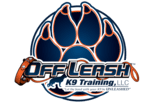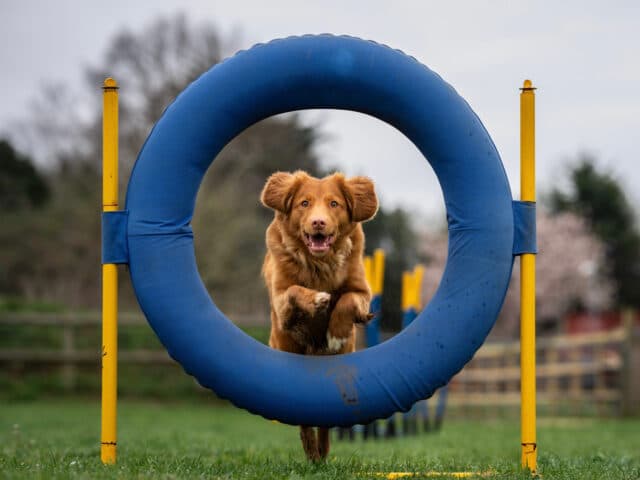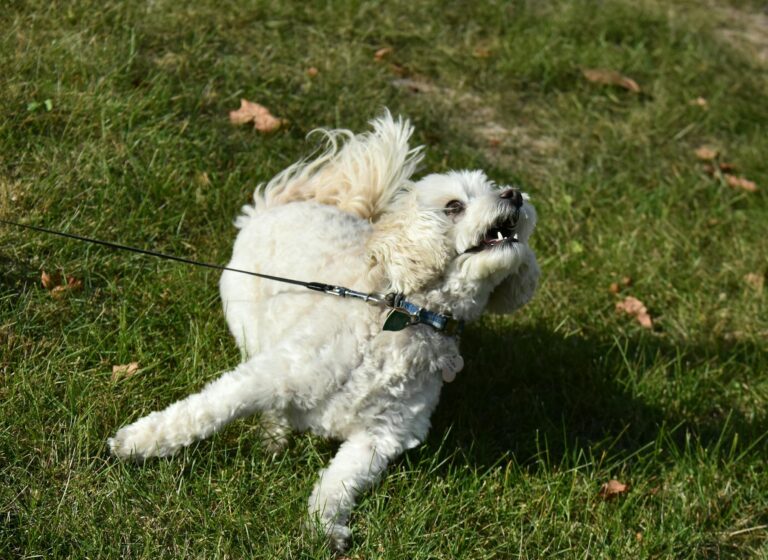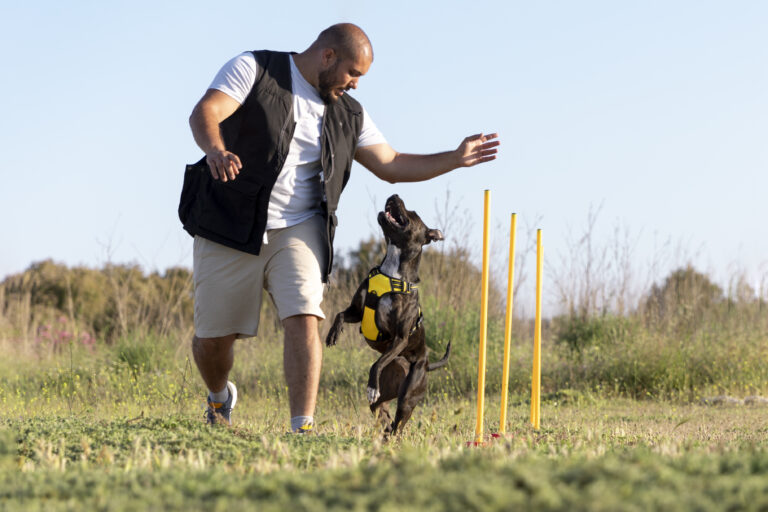Fun and Fitness Unleashed: The Ultimate Guide to Dog Agility Training
Discover the fun and fitness benefits of dog agility training for your canine companion, including physical and mental benefits, setting up agility courses at home, bonding with your dog, and participating in agility competitions and sports.
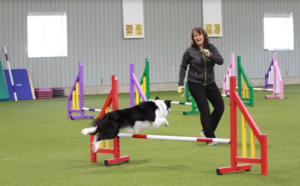
Introduction to Dog Agility Training
Dog agility training is an exciting and dynamic sport that offers numerous benefits for both dogs and their owners. By navigating through obstacle courses that test their speed, dexterity, and obedience levels, dogs engage in a fun and stimulating activity that promotes physical fitness and mental alertness [5]. This form of training not only keeps dogs physically active but also provides a platform for enhancing the bond between dogs and their owners. For example, when a dog successfully completes an agility course with the guidance and support of their owner, it reinforces trust and teamwork, strengthening the relationship between them.
In agility training, there is a wide array of obstacles that dogs encounter, each presenting a unique challenge. From weave poles that require precise footwork to tire jumps that test their leaping abilities, these obstacles help dogs develop their physical skills and coordination. Additionally, the mental stimulation provided by agility courses is essential for keeping dogs engaged and focused on the tasks at hand. This mental challenge not only prevents boredom but also boosts dogs’ confidence as they overcome obstacles and master new skills, contributing to their overall well-being.
The Physical Benefits of Dog Agility Training
Participating in dog agility training not only provides a fun and engaging way for dogs to exercise but also offers numerous physical benefits that contribute to their overall well-being. This form of activity helps to strengthen the bones and joints of dogs, promoting better mobility and reducing the risk of musculoskeletal issues as they age. For example, the jumping and weaving involved in agility courses can enhance a dog’s coordination and balance, which are essential for their physical health.
Moreover, agility training is a fantastic way to keep both dogs and their owners in good shape. The high-energy nature of agility courses ensures that both the canine and human participants get a full-body workout while having a great time together. This shared physical activity not only boosts the fitness levels of dogs but also helps owners stay active and maintain a healthy lifestyle. By engaging in agility training regularly, dogs and their owners can enjoy the benefits of improved cardiovascular health, muscle tone, and overall physical fitness. The dynamic nature of agility courses challenges dogs to overcome various obstacles, such as tunnels, jumps, and weave poles, which not only strengthen their muscles but also provide mental stimulation that contributes to their overall well-being.
The Mental Benefits of Dog Agility Training
Engaging in dog agility training not only benefits your furry friend physically but also contributes significantly to their mental health and well-being. For example, when dogs participate in agility courses, they are required to focus their natural instincts, which not only provides mental stimulation but also enhances their confidence levels. This mental stimulation is crucial for keeping dogs sharp, alert, and continuously learning, no matter their breed, size, or age.
Moreover, agility competitions are an excellent way to introduce mental challenges into your dog’s routine. These competitions require dogs to navigate through complex obstacle courses, making quick decisions and relying on their training and instincts to succeed. This mental engagement keeps dogs enthusiastic, excited, and mentally sharp, fostering a sense of accomplishment and boosting their overall cognitive abilities. By participating in agility training and competitions, dogs not only stay physically fit but also mentally agile, leading to a happier and more fulfilled life.
 Setting Up Agility Courses at Home
Setting Up Agility Courses at Home
Setting up agility courses at home can be a rewarding experience for both you and your furry friend. It’s crucial to create a safe and suitable environment that promotes your dog’s well-being and allows them to enjoy the training process. One way to achieve this is by incorporating basic obedience training into the agility courses, as it not only helps in teaching your dog essential commands but also ensures effective learning and progression in agility skills.
For instance, you can start by introducing simple obstacles like tunnels, jumps, and weave poles in your backyard or a spacious indoor area to engage your dog in interactive training sessions. These DIY agility course materials provide mental stimulation and physical exercise, catering to your dog’s natural instincts while enhancing their overall well-being. Moreover, by setting up these courses at home, you can customize the training to suit your dog’s pace and abilities, making the experience both enjoyable and beneficial for your canine companion.
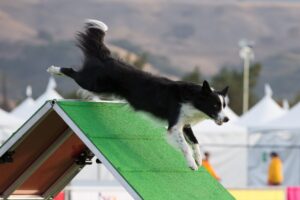 Bonding and Communication Through Agility Training
Bonding and Communication Through Agility Training
Engaging in agility training with your canine companion goes beyond just physical exercise; it serves as a unique platform to strengthen the bond and trust between dogs and their owners. By navigating obstacle courses together, you and your dog develop a special connection built on teamwork, communication, and shared experiences. For example, when your dog successfully completes a challenging agility course with your guidance and support, it reinforces their trust in you and deepens the bond you share.
Moreover, the positive reinforcement methods commonly used in agility training sessions play a crucial role in enhancing this bond. When you reward your dog for following commands and completing obstacles, it not only boosts their confidence but also fosters a sense of trust and understanding between you both. This mutual respect and encouragement form the foundation for effective communication and teamwork, essential not only during training sessions but also in your day-to-day interactions with your furry friend.
Additionally, enrolling in local agility training classes provides valuable opportunities for socialization and skill-building for your dog. These classes offer a structured environment where dogs can interact with others, learn from different experiences, and develop their agility abilities under the guidance of experienced trainers. Through these group sessions, your dog not only improves their agility skills but also learns how to work alongside other dogs, further enhancing their social skills and overall behavior.
Agility Competitions and Sports for Dogs
Agility competitions and sports for dogs go beyond just physical exercise; they offer a myriad of benefits that contribute to a dog’s overall well-being. Participating in agility competitions not only improves a dog’s physical fitness but also enhances their discipline. For example, the structured nature of these competitions helps dogs learn to focus, follow commands, and control their impulses, which can translate into better behavior and obedience in other aspects of their lives. By engaging in agility competitions, dogs get mental stimulation along with the physical workout, keeping their minds sharp and active.
Organizations such as the American Kennel Club (AKC) play a pivotal role in promoting agility training and competitions. These organizations offer a supportive and enriching environment for both dogs and their owners to learn and grow together. For instance, the AKC provides resources, guidance, and access to competitions that cater to various skill levels, ensuring that dogs of all abilities can participate and benefit from the experience. Additionally, the sense of achievement and satisfaction dogs derive from successfully completing agility courses can boost their confidence and self-esteem, leading to happier and more fulfilled pets. Agility training is not just a physical activity but a holistic approach to enhancing a dog’s life through fun, engaging, and rewarding challenges.
